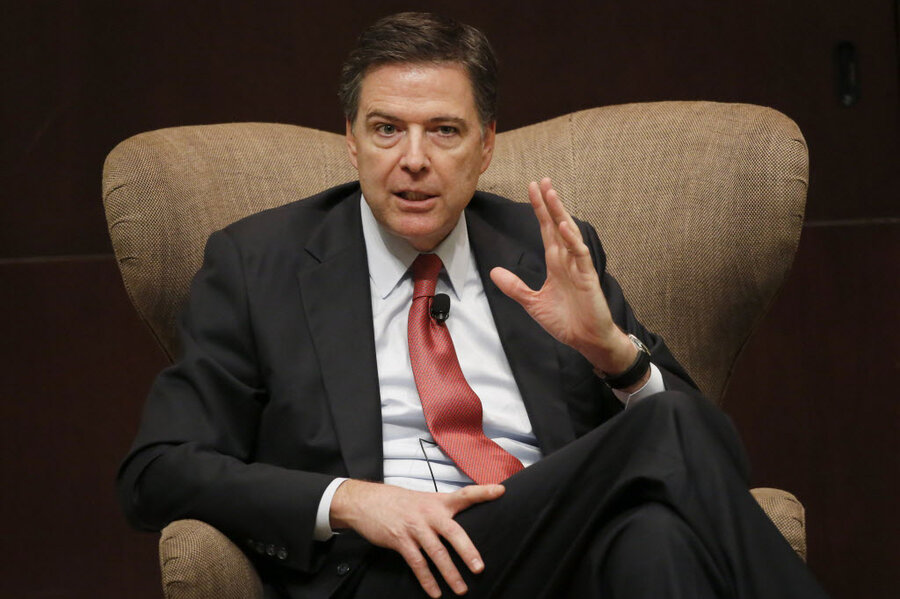FBI chief pins crime surge on 'Ferguson effect.' Are cops afraid to do their jobs?
Loading...
The "Ferguson effect" is partly responsible for rising murder rates in some US cities, FBI Director James Comey said last Friday.
After two decades of steady decline, violent crime has spiked in several major cities, including Chicago, Milwaukee, and Baltimore. Some experts, now including Mr. Comey, have attributed this in part to the "Ferguson effect," in which police patrol the streets less aggressively for fear of being recorded and being at the center of the next scandal.
"Something deeply disturbing is happening in places across America," Comey told a group of students at the University of Chicago Law School. "Far more people are being killed in many American cities, many of them people of color, and it's not the cops doing the killing."
"Part of the explanation is a chill wind that has blown through law enforcement over the last year and that wind is surely changing behavior," he added.
Comey said he based his opinion on conversations he’s had with officers, and that while there are other possible reasons for the spike in violent crime, the one that seems to fit best is a change in police behavior.
"In today's YouTube world, are officers reluctant to get out of their cars and do the work that controls violent crime?" he asked.
The New York Times ran a front-page story on the crime spike at the end of August, but while some of the statistics can be deceiving – especially after a decades-long crime decline as the United States experienced from the mid-1990s to today – some trends in some cities are worrying.
While most US cities are much safer than they were years ago, The Washington Post noted in early September that Baltimore, Milwaukee, and St. Louis are on pace to see more murders than at any point since the crime-ridden early 1990s.
Both Baltimore and St. Louis have been the sites of controversial police killings. In April, 25-year-old Freddie Gray was arrested and sustained serious injuries while being driven around in the back of a police van. He later died from his injuries, triggering protests and riots across the city. Last year in Ferguson, Mo., – a St. Louis suburb – a white police officer shot and killed Michael Brown, an unarmed black teen, triggering protests there. Somewhat ironically, neither incident was captured on camera.
In Baltimore, at least, the Ferguson Effect seems to be a factor. Freddie Gray was buried on April 27, and in May the city saw 43 homicides – its deadliest month in 40 years. That month also saw a sharp and sudden decline in arrests.
Peter Moskos, a former Baltimore police officer and now a professor at John Jay College of Criminal Justice, told Time in early June that "the cops I've spoken to say it's different now."
"Cops are saying, 'If we’re going to get in trouble for well-intentioned mistakes then [forget] it, I'm not working,'" he added.
Comey said last Friday that police need to get back to aggressive policing on the street, "or there will be profound consequences."
"All of us, civilian and law enforcement, white, black, and Latino, have an interest in that kind of policing," he said. "We need to be careful it doesn't drift away from us in the age of viral videos."
Still, many experts suggest that other factors better explain some of the crime spikes. In Chicago the abundance of guns compared to other major cities is considered a major factor, but factors can range from the splintering of gangs and the destruction of low-income housing developments, to local economic slowdowns. Milwaukee has long been home to one of the country’s largest sellers of crime guns.
Experts are also cautious to read too much into data from such a short period, especially after a 20-year crime decline. Homicide rates dropped in several major cities in 2013 and 2014, including Chicago, and many of the sharp percentage increases in some cities are still far below the peaks of the mid-1990s.
Material from Reuters was used in this report.






